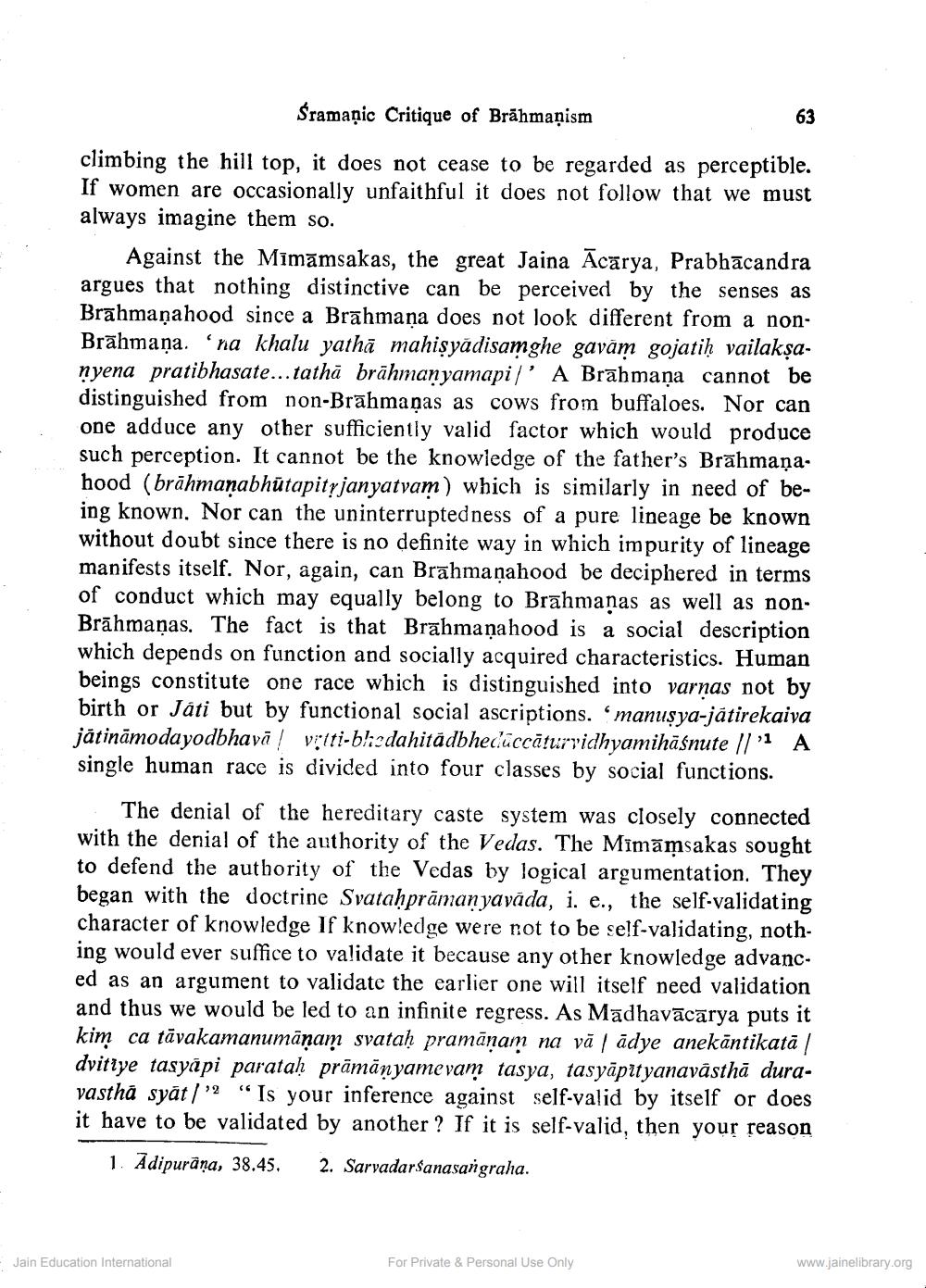________________
Śramanic Critique of Brahmanism
climbing the hill top, it does not cease to be regarded as perceptible. If women are occasionally unfaithful it does not follow that we must always imagine them so.
Against the Mimamsakas, the great Jaina Acarya, Prabhācandra argues that nothing distinctive can be perceived by the senses as Brahmaṇahood since a Brahmana does not look different from a nonBrāhmaṇa. 'na khalu yatha mahiṣyadisamghe gavām gojatiḥ vailakṣanyena pratibhasate... tatha brahmanyamapi/' A Brahmana cannot be distinguished from non-Brahmanas as cows from buffaloes. Nor can one adduce any other sufficiently valid factor which would produce such perception. It cannot be the knowledge of the father's Brāhmaṇahood (brāhmaṇabhutapitrjanyatvam) which is similarly in need of being known. Nor can the uninterruptedness of a pure lineage be known without doubt since there is no definite way in which impurity of lineage manifests itself. Nor, again, can Brahmaṇahood be deciphered in terms of conduct which may equally belong to Brahmaṇas as well as nonBrāhmaṇas. The fact is that Brahmaṇahood is a social description which depends on function and socially acquired characteristics. Human beings constitute one race which is distinguished into varņas not by birth or Jati but by functional social ascriptions. manuṣya-jätirekaiva jätināmodayodbhava vṛtti-bhodahitädbhedaccäturvidhyamihāsnute || 1 A
single human race is divided into four classes by social functions.
63
The denial of the hereditary caste system was closely connected with the denial of the authority of the Vedas. The Mimamsakas sought to defend the authority of the Vedas by logical argumentation. They began with the doctrine Svataḥpramanyavada, i. e., the self-validating character of knowledge If knowledge were not to be self-validating, nothing would ever suffice to validate it because any other knowledge advanced as an argument to validate the earlier one will itself need validation and thus we would be led to an infinite regress. As Madhavacārya puts it kim ca tavakamanumānam svataḥ pramānam na vā ādye anekāntikatā ( dvittye tasyapi parataḥ prāmānyamevam tasya, tasyapityanavastha duravastha syat/2 "Is your inference against self-valid by itself or does it have to be validated by another? If it is self-valid, then your reason
1. Adipurana, 38.45. 2. Sarvadarsanasangraha.
Jain Education International
For Private & Personal Use Only
www.jainelibrary.org




